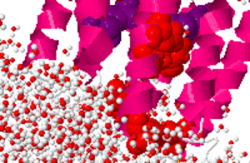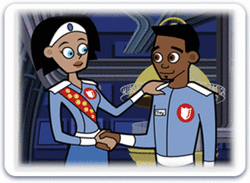Images
This is a mini-course for individuals with no proficiency or extremely limited knowledge of Arabic language and culture who are about to begin study or work in an Arabic-speaking context. The course will introduce learners to basic concepts and information to facilitate entry and engagement in an Arabic-speaking environment.
Additional Course Details
Topics Covered:
Cultural content: Lesson 1/Diversity in the Arabic-Speaking World; Lesson 2/Historical Aspects of Islam; Lesson 3/Political Governance; Lesson 4/Family and Society; Lesson 5/America and the Arab World; Lesson 6/The Suk, the Ahwa, and a Bowl of Fresh Hummus. Linguistic content: Lesson 1/Greetings! Marhaba!; Lesson 2/ Eating Out and Shopping; Lesson 3/ Visit to a Home in the Arabic-Speaking World; Lesson 4/ Traveling to an Arabic-Speaking Country; Lesson 5/Professional Meetings; Lesson 6/Common Expressions in Arabic.
Estimated Time to Complete Course: This is a six-week, six-lesson, half-semester course (equivalent to six weeks of university-level instruction) or roughly sixty hours of student effort. Suggested Prerequisites: None. Additional Software or Materials Required: None. Maintenance Fee (per student): Not yet determined.
In-Depth Description
Arabic for Global Exchange is a course in Arabic language and culture that utilizes cognitive learning technologies and computer-assisted language instruction to enhance educational, governmental, and business exchanges that are increasingly vital to public policy and economic development in the global economy. This is a mini-course for individuals with no proficiency or extremely limited knowledge of Arabic language and culture who are about to begin study or work in an Arabic-speaking context.
The course introduces learners to basic concepts and information to facilitate entry and engagement in an Arabic-speaking environment. The Arabic for Global Exchange project aims to meet a need for high quality, communication-oriented instructional materials to introduce basic cultural knowledge and survival language.
Arabic for Global Exchange is a six-week, six-lesson, half-semester course (equivalent of six weeks of university-level instruction), or roughly sixty hours of student effort. The course will be available in two formats: one a controlled-access version for students taking the course for academic credit, and the other, a free and open version for independent learners on the Internet. Each of the six lessons in the course includes texts and activities to promote acquisition of cultural content in English as well as basic introductory exposure to the Arabic language.
CULTURAL CONTENT
Cultural content invites exploration of topics and learning objectives in six complementary areas.
Lesson 1: The Diversity of the Arabic-Speaking World Introduces students to the changing demographics and diversity of the Arab World. Lesson 2: Historical Aspects of Islam Guides students to learn background information on the history of Islam in the Middle East and consider the role that the religion plays in everyday life in society. Lesson 3: Political Governance Introduces students to political systems of the Arab World. Lesson 4: Family and Society Guides students to explore the institution and importance of the family, the empowerment deficit that women face, and the symbolism of wearing the hijab. Lesson 5: America and The Arab World Introduces students to the complexities of the Arab World’s relationship with the West seen through many of the society-shaping political, economic, and social issues that resonate in the Arab World today. Lesson 6: The Suk, the Ahwa, and a Bowl of Fresh Hummus Highlights places in the Arabic-speaking world of beauty, rich culture, and excitement.
LINGUISTIC CONTENT
Linguistic content provides a brief introduction to the Arabic Language through focus on the following general topics and subtopics
Lesson 1/Greetings! Marhaba!
Lesson 2/ Eating Out and Shopping
Lesson 3/Visit to a Home in the Arabic-Speaking World
Lesson 4/Traveling to an Arabic-Speaking Country
Lesson 5/Professional Meetings
Lesson 6/Common Expressions in Arabic
Through a variety of activities and practice exercises, the course fosters students’ engagement with diverse texts and multimedia resources including visual art, essays, literary works, position papers, articles from magazines and newspapers, photos, interviews, songs, and film clips, etc.
Similar resources
Carnegie Mellon University challenges the curious and passionate to imagine and deliver work that matters.
A private, global research university, Carnegie Mellon stands among the world's most renowned educational institutions, and sets its own course. Start the journey here.
Over the past 10 years, more than 400 startups linked to CMU have raised more than $7 billion in follow-on funding. Those investment numbers are especially high because of the sheer size of Pittsburgh’s growing autonomous vehicles cluster – including Uber, Aurora, and Argo AI – all of which are here because of their strong ties to CMU.
With cutting-edge brain science, path-breaking performances, innovative startups, driverless cars, big data, big ambitions, Nobel and Turing prizes, hands-on learning, and a whole lot of robots, CMU doesn't imagine the future, we create it.


Introduction to Biology

Biochemistry

Anatomy & Physiology

American English Speech

Chinese I













